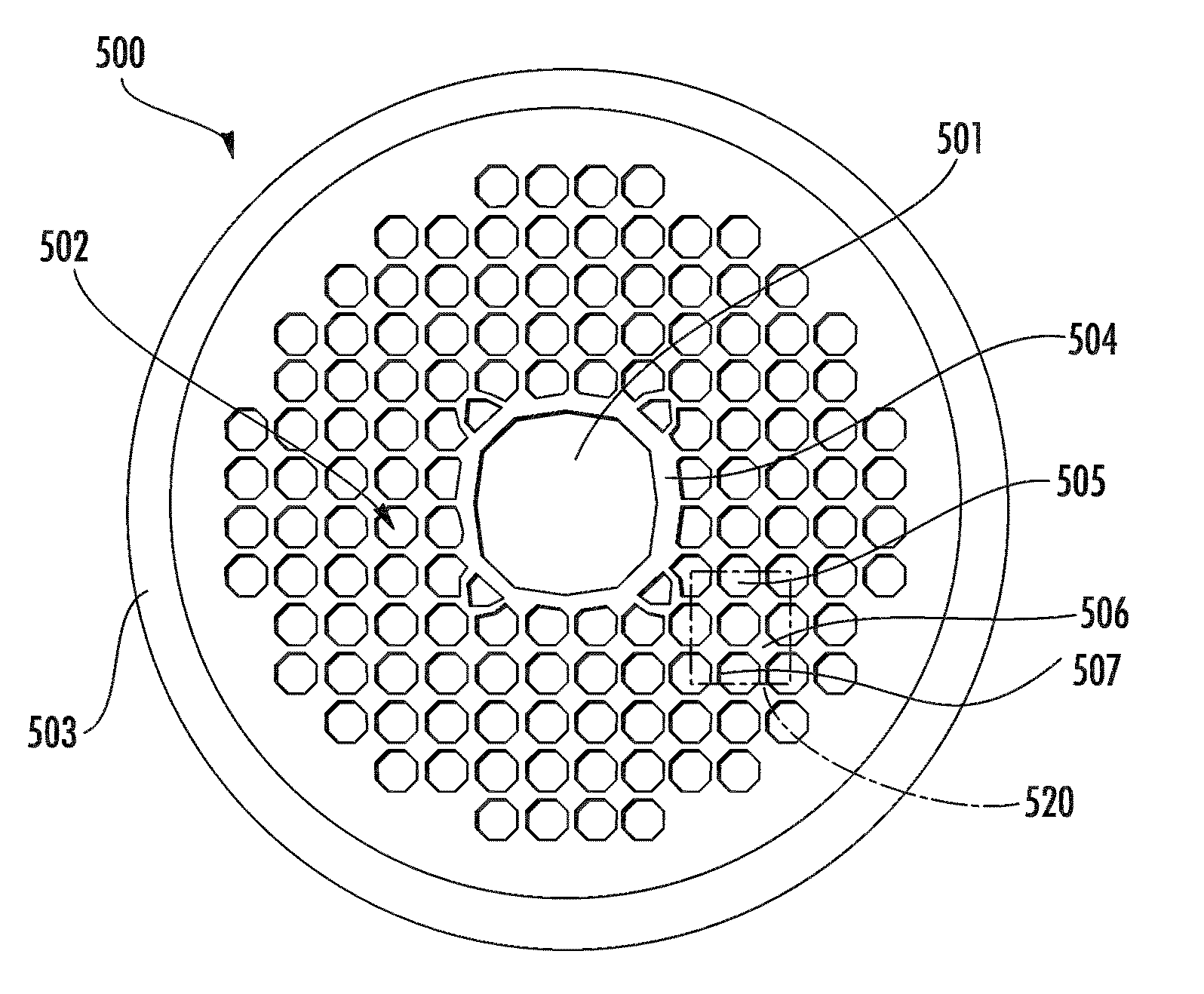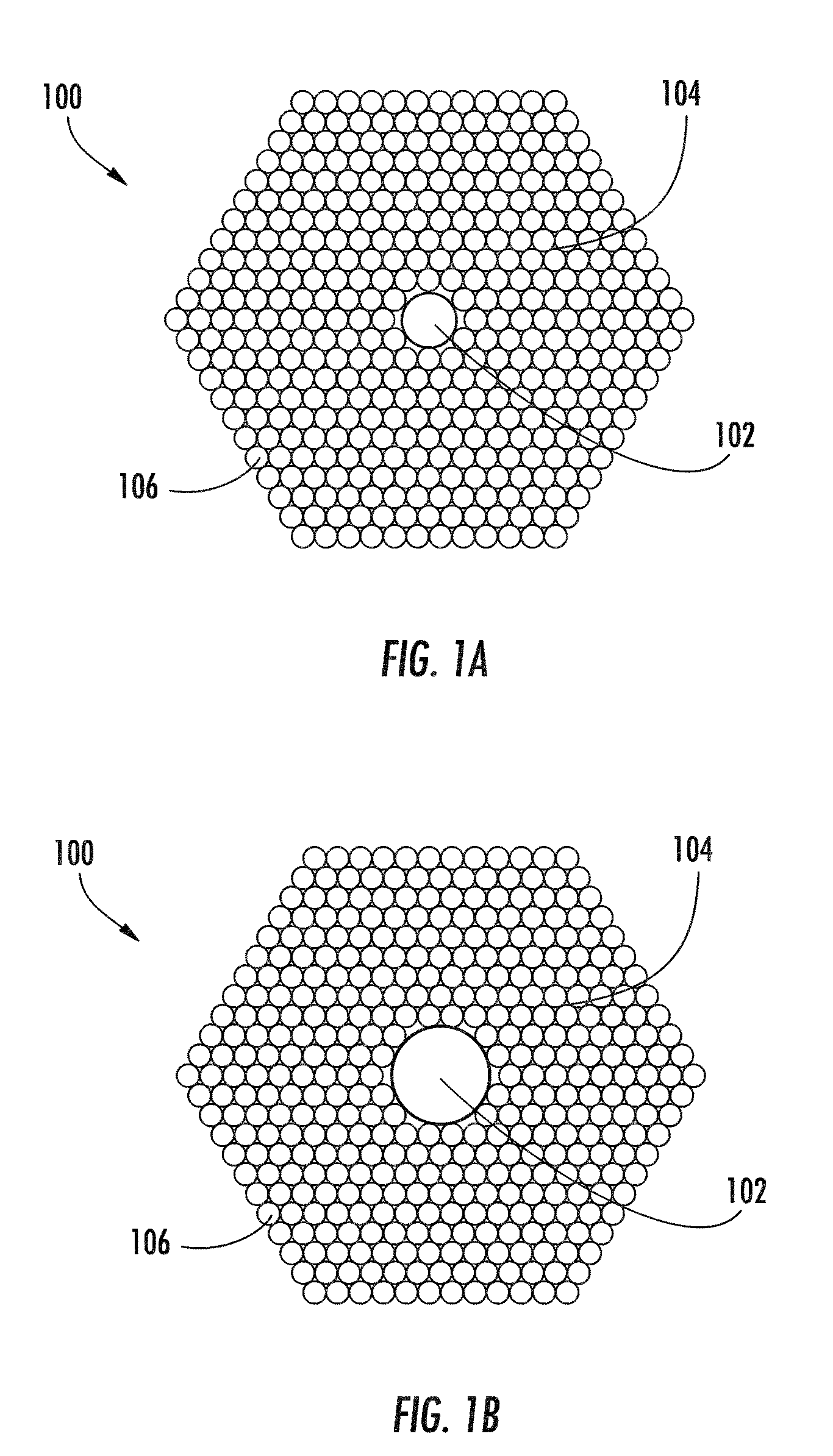Wide bandwidth, low loss photonic bandgap fibers
a photonic bandgap fiber and wide bandwidth technology, applied in the field of optical fibers, can solve problems such as difficulty in increasing the transmission window, and achieve the effect of improving the air filling fraction and low loss
- Summary
- Abstract
- Description
- Claims
- Application Information
AI Technical Summary
Benefits of technology
Problems solved by technology
Method used
Image
Examples
example i
Fabricated HC PBGF with Rectangular Lattice
[0078]In the example described below, a HC SQL PBGF was fabricated with fiber outer diameter of 125 μm. FIG. 9A illustrates an image of a fabricated preform 900. Features 901-905 of fabricated preform 900 correspond with 501-507 of cane 500, and eventually with 301-307 of fiber 300. FIG. 9B illustrates an exploded region of a portion of the image of FIG. 9A and shows a unit cell of preform 900. FIG. 9C is a scanning electron microscope (SEM) image illustrating a cross-sectional view of a fabricated SQL PBGF drawn using the preform of FIG. 9A. The irregularities in FIG. 9C are believed to be by-products of the cleaving process for preparing fiber end for the photos, and not defects in the PBG fiber structure. Air-filling fraction is estimated to be larger than 83% in this example. FIG. 9D is a SEM image illustrating an exploded view of the fiber illustrated in FIG. 9C, and illustrates the cladding structure of the fabricated fiber. As illust...
PUM
| Property | Measurement | Unit |
|---|---|---|
| aspect ratio | aaaaa | aaaaa |
| outer diameter | aaaaa | aaaaa |
| inner diameter | aaaaa | aaaaa |
Abstract
Description
Claims
Application Information
 Login to View More
Login to View More - R&D
- Intellectual Property
- Life Sciences
- Materials
- Tech Scout
- Unparalleled Data Quality
- Higher Quality Content
- 60% Fewer Hallucinations
Browse by: Latest US Patents, China's latest patents, Technical Efficacy Thesaurus, Application Domain, Technology Topic, Popular Technical Reports.
© 2025 PatSnap. All rights reserved.Legal|Privacy policy|Modern Slavery Act Transparency Statement|Sitemap|About US| Contact US: help@patsnap.com



